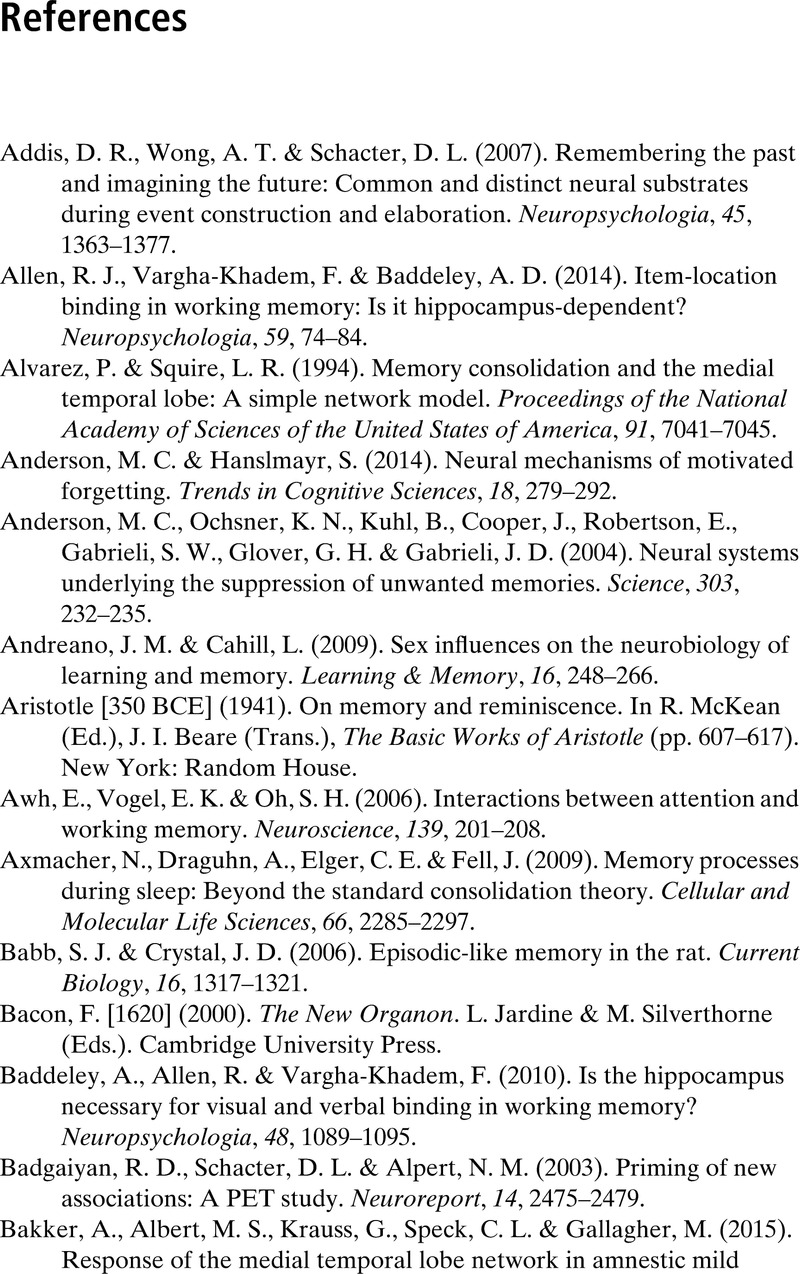Book contents
- Frontmatter
- Dedication
- Epigraph
- Contents
- List of Figures
- Preface
- 1 Types of Memory and Brain Regions of Interest
- 2 The Tools of Cognitive Neuroscience
- 3 Brain Regions Associated with Long-Term Memory
- 4 Brain Timing Associated with Long-Term Memory
- 5 Long-Term Memory Failure
- 6 Working Memory
- 7 Implicit Memory
- 8 Memory and Other Cognitive Processes
- 9 Explicit Memory and Disease
- 10 Long-Term Memory in Animals
- 11 The Future of Memory Research
- Glossary
- References
- Author Index
- Subject Index
- Plate section
- References
References
Published online by Cambridge University Press: 28 May 2018
- Frontmatter
- Dedication
- Epigraph
- Contents
- List of Figures
- Preface
- 1 Types of Memory and Brain Regions of Interest
- 2 The Tools of Cognitive Neuroscience
- 3 Brain Regions Associated with Long-Term Memory
- 4 Brain Timing Associated with Long-Term Memory
- 5 Long-Term Memory Failure
- 6 Working Memory
- 7 Implicit Memory
- 8 Memory and Other Cognitive Processes
- 9 Explicit Memory and Disease
- 10 Long-Term Memory in Animals
- 11 The Future of Memory Research
- Glossary
- References
- Author Index
- Subject Index
- Plate section
- References
Summary

- Type
- Chapter
- Information
- Cognitive Neuroscience of Memory , pp. 248 - 269Publisher: Cambridge University PressPrint publication year: 2017

